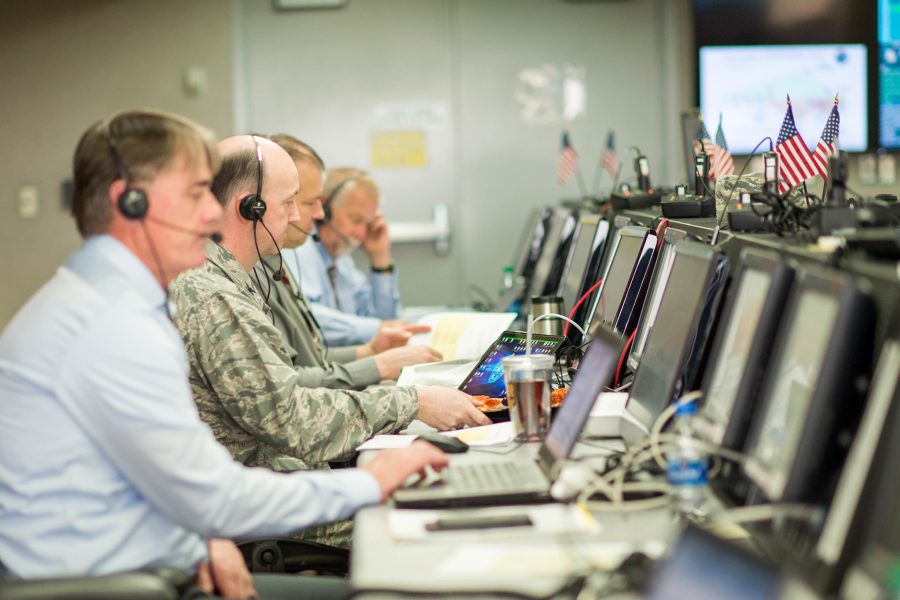The Space Force aims to release details of its new satellite communications acquisition strategy this summer as the service considers how to combine government and privately owned technologies into one seamless enterprise.
Space Force boss Gen. Jay Raymond last month signed off on a vision to overhaul how the service handles SATCOM. Clare Grason, head of the USSF’s commercial SATCOM office, said they have contracted help to figure out how to move to a service-based model, where the military can pay for comms by how much it uses, like per byte.
The Pentagon wants to rely on a mixture of military-specific and commercial SATCOM to grow the amount of data it can pass around the world, share the cost of global comms with companies, and fall back on the growing pool of satellites and ground terminals if some malfunction or are attacked or destroyed. Treating SATCOM as a complementary patchwork of myriad service providers with smaller contracts could also help the military fill in gaps that its current, fragmented approach allows.
“Where I see us growing, now that we are assigned to the Space Force, within that domain is really ensuring dominance of the economy of space and the domain itself,” Grason said March 11 at the Satellite 2020 conference. “We believe there is a lot of growth potential and that the U.S. government should lead and accelerate ambitions beyond [geostationary orbit, about 22,200 miles above the equator]. I believe that commercial industry is going to be essential to delivering capability and ensuring that key market sectors within space are dominated by the U.S. government, including information distribution, energy, manufacturing.”
While the effort wants to take advantage of something like pilot programs or experiments to prove out new SATCOM technologies and concepts, Grason told Air Force Magazine exactly what that would explore is still under debate. Her office wants to prototype more systems and use nontraditional acquisition authorities and contracts to look at what industry has to offer.
About three dozen companies provide commercial SATCOM capabilities, but the military’s reliance on them is growing. It’s still unclear how many contracts the Space Force could issue for SATCOM under the new strategy.
“In theory, you could make one contract award. I think that would probably be under protest indefinitely,” Grason said. “There’s many different ways to go about how you would divide up the requirement, whether by geographical [area of responsibility], or frequency, or use cases. We’re delving into that now.”
Through the Space Force, Space Development Agency, and other organizations, DOD will buy some systems that need regular operation by military personnel for combat purposes. Other systems will stay under a company’s purview but stay connected to the Space Force’s command-and-control network, which could consolidate the data but create some hurdles when DOD has to go through the company for certain information or movement.
Rebecca Cowen-Hirsch, senior vice president of government policy and strategy at Inmarsat Government, warned against a one-size-fits-all approach to ground terminals and data-processing systems. Even though the Space Force wants to create an overarching control system to tie together its various kinds of satellites, intelligence, communications, and other missions will have different requirements, she said.
She added Airmen could become more like satellite managers that treat commercial systems with a “light touch” because the technologies are so advanced and increasingly autonomous.
“There’s going to be a very significant change required in the mindset of government satellite operations when we bring into play this integrated architecture,” she said. “Very different than the thousands of Airmen that previously had characterized their career paths of being satellite operators and required to command and control specific assets. … There’s much to be learned from how the commercial industry operates its assets.”
